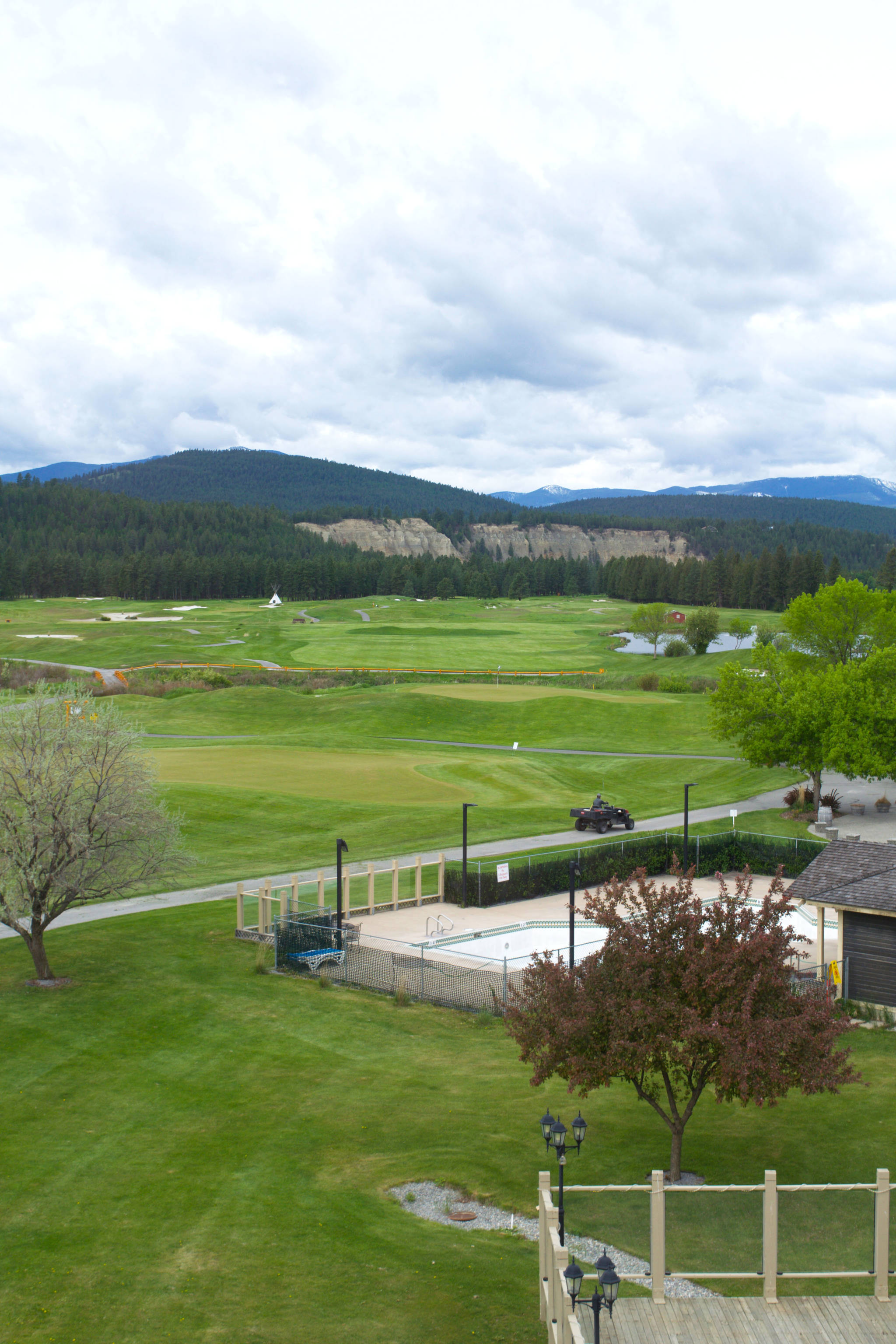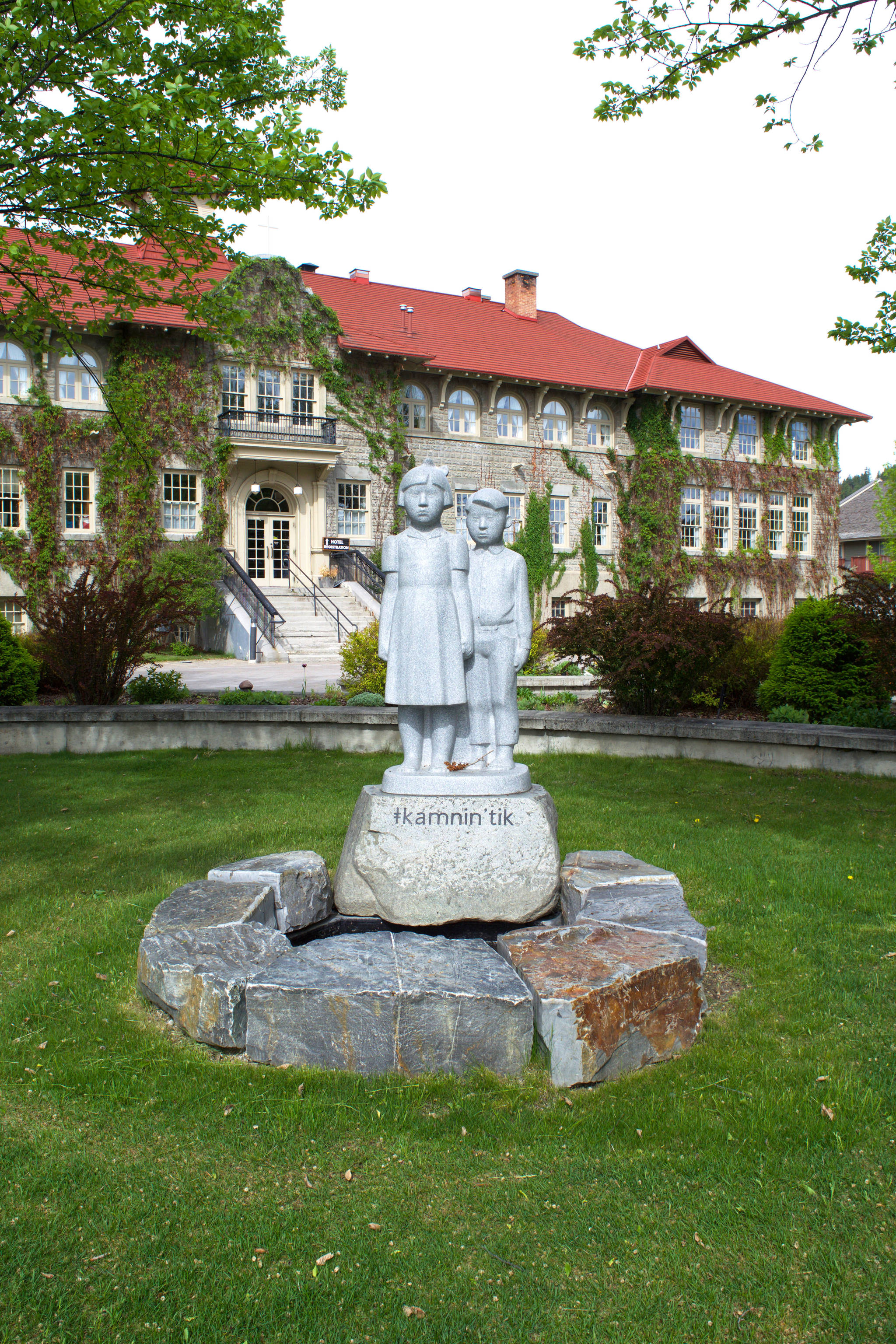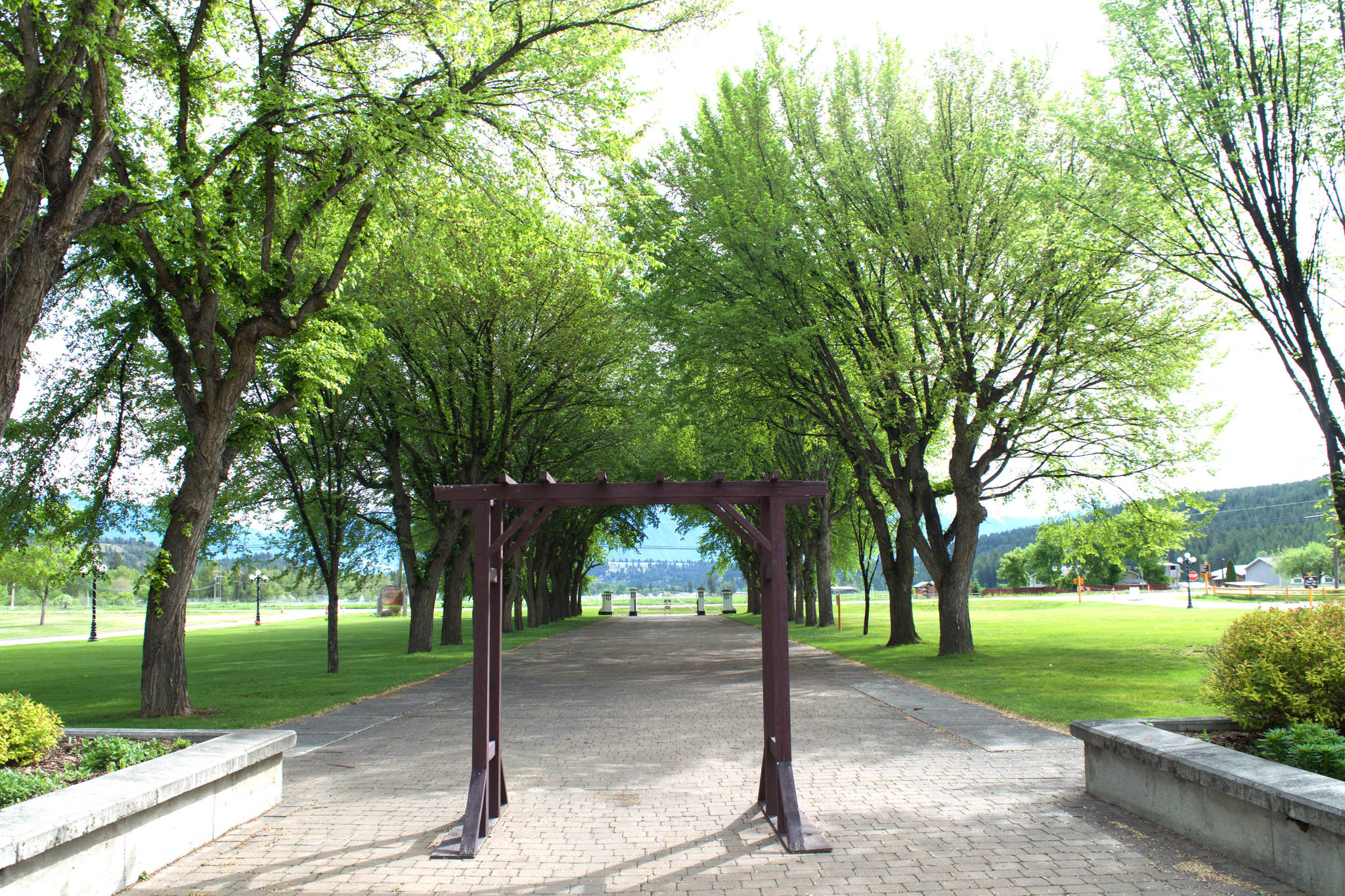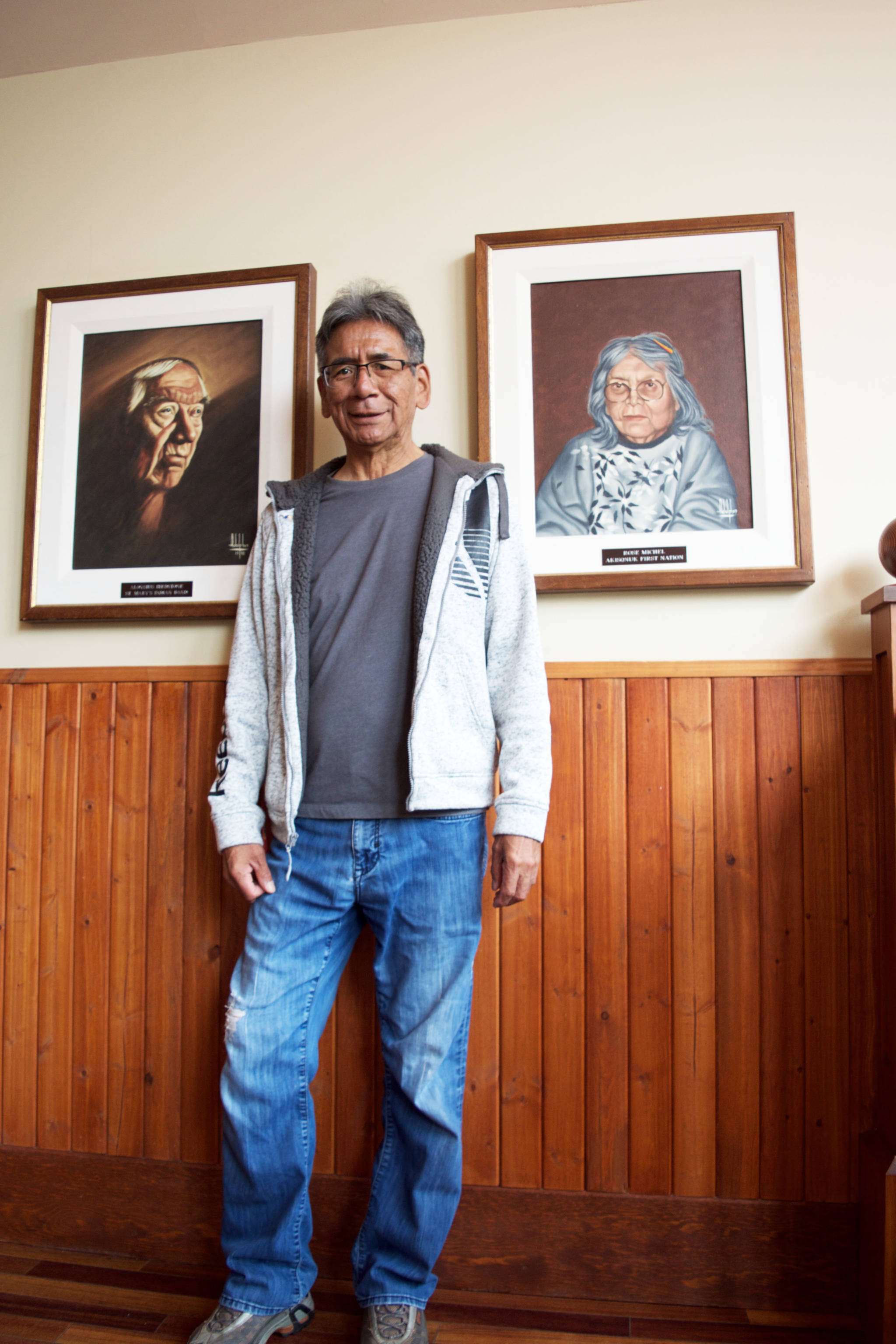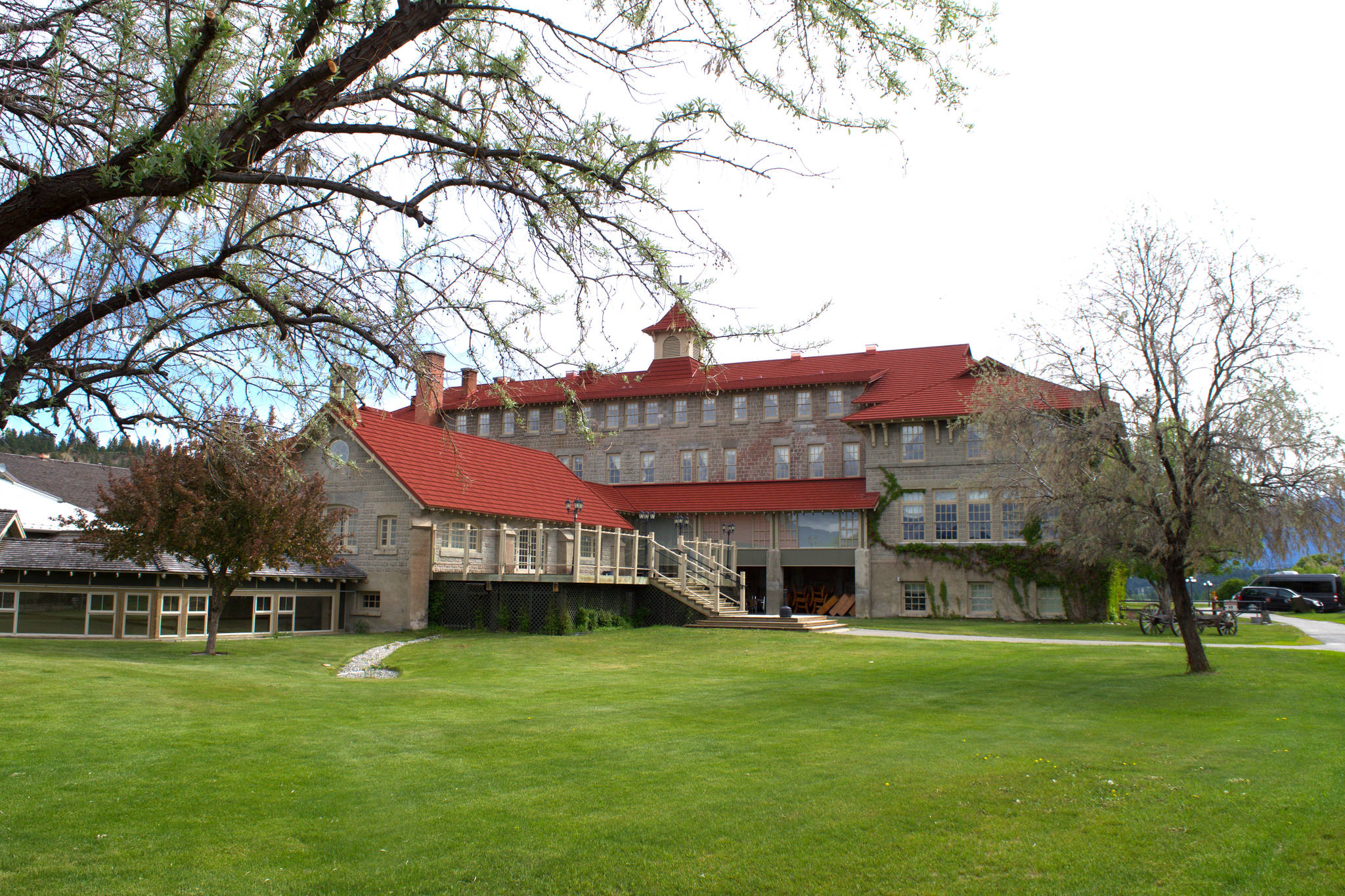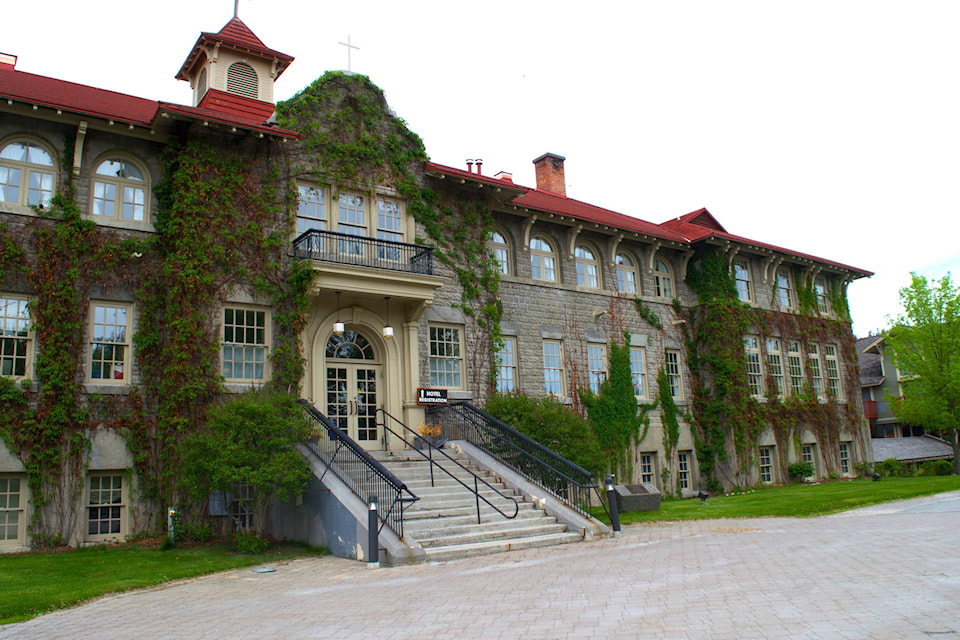20 years ago, a group of staff, golfers, community members and Ktunaxa Indigenous Elders stood at the first tee box at St. Eugene to commemorate the resort’s very first round of golf. They rejoiced and celebrated all of the hard work that went into transforming what was a dark past into an encouraging future.
Two decades later, St. Eugene Golf Resort and Casino is celebrating 20 years of golf, amongst many other achievements. A grand ceremony was originally planned for their opening day in May to commemorate their achievement, until COVID-19 put a screeching halt to their plans.
Standing on the steps of the historic St. Eugene Hotel in early June, Facilities Manager Graeme Douglas outlined how strangely quiet the resort has been for this time of year.
Douglas has spent the last 25 years at St. Eugene, helping to transform the vision that the Ktunaxa Nation had to highlight the culture of Indigenous peoples and the importance of their past. The entire resort is steeped in history, which ultimately began in 1910 when the now-hotel was first erected as a residential school.
READ MORE: Ktunaxa Nation cancels annual charity golf tournament
As Elder Mary Paul said back in 1984, “since it was within the St. Eugene Mission School that the culture of the Kootenay Indian was taken away, it should be within that building that it is returned.”
The golf course opened in May of 2000 and was rated the top three Best New Canadian Courses by Golf Digest. The legacy lives on to this day.
The resort has been closed for the past several months, ever since restrictions were put in place by the BC government to help stop the spread of COVID-19. The golf course was able to open on May 20 with COVID restrictions in place, but only time will tell when the casino and hotel can re-open.
It’s curiously fitting then, that 25 years ago the resort was also empty. A shell of a building, as Douglas put it. The building is currently without its usual hustle and bustle of weddings, grad ceremonies, locals and tourists, but the fact remains that it will once again (and hopefully soon) be enjoyed by many.
“We stood here, in the same spot, 25 years ago with a shell of a building and some really big dreams. There was nothing but the building, lots of dirt, and broken windows. Here we are, empty again, and the building is waiting to wake up again,” Douglas said, noting the difference in scenery that the resort boasts today.
Isaac Birdstone, who stood beside Douglas from six feet away, recounted the lifetime he and his family have spent on this land. Birdstone now works for the resort as an historian, and was one of the last students to leave the residential school when it was shut down in 1970.
“I will share with you a word that we use to describe this period in time now, which we said 25 years ago,” said Birdstone. “Kla’ awaken - to wake up again. The building, through all of this time, through the ups and downs, stands waiting to be awoken again. It will stand again.”
According to St. Eugene historical documents posted online, in 1910 the Canadian government funded and constructed the St. Eugene Mission school. At the time, it was called the Kootenay Indian Residential School and was operated by the Oblates of Mary Immaculate. The facility was the first comprehensive Residential school to be built in the Canadian west. The Mission instructed 5000 children from the Okanagan, Shuswap and Blackfoot Nations in addition to the area’s Ktunaxa Nation.
“The school was closed in 1970 when government policy changed to encourage public education for Indigenous children,” reads the document. “In 1973, the BC government leased the Mission with the intent of turning it into a psychiatric care facility. The building was stripped of historic fixtures and artifacts, and after spending $750,000 on renovations the project was abandoned. The following winter, the pipes burst and the building suffered severe damage from internal flooding. The building remained empty for the next 20 years and was the victim of repeated vandalism.”
READ MORE: Monument unveiled at St. Eugene Resort honours children of residential school
The resort took many years to build, with help from government officials, stakeholders and of course, the Ktunaxa communities. It was a massive undertaking, but ultimately a huge success.
St. Eugene was set to have an acknowledgement ceremony on Friday, June 26, 2020, the very same day the school closed in 1970. The ceremony they had originally planned may not be possible, but Douglas is hopeful that a small group of people will still be able to acknowledge that milestone.
“There has been sadness here and there has been happiness here. You can feel that difference,” said Birdstone.
“We had such big dreams, so much do to, and we didn’t know where to begin. Originally, we tried to do everything at once - the hotel, casino and golf course,” Douglas explained. “We didn’t have enough equity and there were all kinds of road blocks.”
He adds that with the help of Bill Pattison from Delta Hotels and the blessing of Chief Sophie Pierre and the Tribal Council, they decided to focus solely on the golf course as the first step. This would help them acquire more funding and investors to move forward with the rest of the resort.
The outcome was a 7007-yard par 72 championship course, built by a crew made up of 80 per cent First Nations workers. As of 2017, St. Eugene Golf Resort and Casino is solely owned by the four Ktunaxa communities.
“A lot of the workers were former students at the Residential School. You can feel that in the entire resort, there are thousands of years of history here,” said Douglas.
One of the most crucial parts of the entire resort, Douglas said, is the interpretive centre. Tourists, school groups and community members are able to learn about the history of the land, buildings and the four members bands of the Ktunaxa Nation which include the ʔakisq̓nuk First Nation, ʔaq̓am, ʔakink̓umǂasnuqǂiʔit (Tobacco Plains), yaqan nukiy (Lower Kootenay) and Shuswap Indian Band.
“It’s the heart of the people,” Douglas said. “The building, the Ktunaxa people have worked with the community to teach about the past. There is also a large focus on where we can go moving forward. We’re so very proud of what we’ve created here.”
Currently, 35 per cent of the staff at the resort are Indigenous, many of whom live in Ktunaxa First Nation communities.
The resort itself is grandiose and breathtaking. Elm trees that were planted well over 50 years ago, and at one point were suffering, are thriving now. The view from the executive suite spans the entire 328 acre golf course, the hoodoos and beyond.
At one point, the original Ivy plant that plastered the outside walls of the building was taken down, copied, and re-planted.
“In the fall, the ivy turns crimson and is so beautiful,” said Douglas, adding that winter time is equally as beautiful, with winter decorations all throughout the resort.
Not only that, but the diversity of the golf course itself gives back to the Earth, a natural cycle which the Ktunaxa people uphold in their beliefs.
Watering of the course, resort grounds and RV landscape areas is done with recycled water from the non-potable St. Mary River, mixed with wastewater from the resort. It’s one of the few self-contained resorts in Western Canada.
The course is home to more than 150 species of birds, as well as many endangered species such as the blue heron, bald eagle, badger, Townsend long-eared bat and painted turtle. There are 207 acres of natural areas such as deciduous and coniferous forest, wetlands, ponds, buffer zones and wildlife corridors.
“Especially with COVID-19, the golfers love that space; the ability to be immersed in nature and among the wildlife,” said Douglas.
As the golf course celebrates 20 years of success, from reconciliation to an ecologically friendly course that draws people in from across the world, the entire staff looks forward to another summer of golf.
“We’re so proud of where we’ve come,” said Douglas, “and we truly look forward to the day that our new normal will fill the entire resort with people again.”
corey.bullock@cranbrooktownsman.com
Like us on Facebook and follow us on Twitter
Want to support local journalism during the pandemic? Make a donation here.
